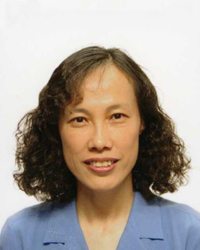Research reveals cellular mechanisms of acute pancreatitis
Led by Department of Surgery faculty and a fourth-year medical student, recent published research sheds light on the role of pancreatic fibroblasts in acute pancreatitis.
“Characterization of Pancreatic Collagen-Expressing Fibroblasts in Mouse Acute Pancreatitis”, from Yanna Cao, MD, and Tien C. Ko, MD, and a fourth-year medical student Amy Qin, appeared in Gastro Hep Advances

Pancreatic stellate cells (PSCs) are critical mediators in chronic pancreatitis with an undefined role in acute pancreatitis. PSCs consist of a heterogenous group of cells and are considered interchangeable with pancreatic fibroblasts. This study explored the heterogeneous nature of PSCs by characterizing pancreatic collagen-expressing fibroblasts (PCFs) via lineage tracing in mouse normal and acute pancreatitis pancreas and determining effect of PCF depletion in acute pancreatitis.
“Our study investigated the role of PCFs in acute pancreatitis,” explained Yanna Cao, MD, associate professor of surgery. “PCFs have been shown to be involved in the progression of chronic pancreatitis and pancreatic adenocarcinoma but have an unclear role in acute pancreatitis.”

The group developed a genetically modified mouse model to track and characterize PCFs in normal pancreas as well as acute pancreatitis. Using this model, they discovered that PCFs comprise around 10 percent of cells in the pancreas, share similar markers with a cell population known as pancreatic stellate cells, and are located mainly around blood vessels and ducts.
“Furthermore, we found that during acute pancreatitis, the PCFs were activated and doubled,” Cao said. “When PCFs were depleted, the severity of acute pancreatitis increased, suggesting that PCFs may play a protective role during acute pancreatitis.”
The Ko/Cao Lab established the validity of the mouse model for tracking pancreatic fibroblasts in homeostasis and in acute pancreatitis and discovered it is also efficient to track fibroblasts in multiple other organs.
This study establishes the validity of a mouse model that may be helpful in studying fibroblasts, a cell group that is notoriously difficult to study due to its heterogeneity, in the pancreas and other organs. The data also suggest that PCFs constitute a subset of pancreatic stellate cells; this is a novel relationship that differs from current theories suggesting that they are either completely distinct or interchangeable populations. The study also indicates that PCFs are activated and proliferate during acute pancreatitis and may play a protective role, which provides guidance for potential therapeutic development for acute pancreatitis.
Cao said future research will include analysis of the identity and function of different subtypes of PSCs in pancreatitis with single-cell multi-omics for a deep understanding of cellular and molecular mechanisms and application of the mouse model to other organs and the diseases.
The primary author, Qin, joined the lab as a second-year medical student as part of the McGovern Summer Research Program. Taking the lead in this research has provided valuable experience critical for her professional development as a future physician.
Additional researchers from the Department of Surgery included Kevin Shi (a second-year medical student), Rachel Tindall (a graduating medical student), Jiajing Li, Binglu Cheng, Jing Li, Baibing Yang, Qiang Yu, and Yinjie Zhang. Additional authors included Jennifer Bailey-Lundberg, Department of Anesthesiology, Critical Care and Pain Management; Bangxing Hong, Balveen Kaur, Georgia Cancer Center; Mamoun Younes, George Washington University; and Qiang Shen, Louisiana State University.